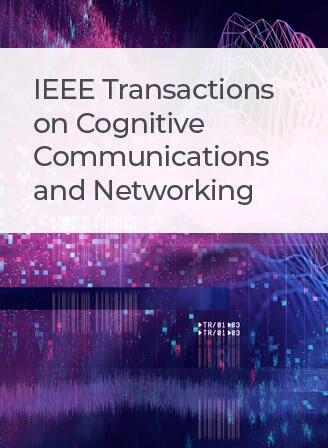RIS-Assisted Hybrid Symbiotic Radio Network: From Practical End-to-End Model to Multi-Objective Optimization
IF 7.4
1区 计算机科学
Q1 TELECOMMUNICATIONS
IEEE Transactions on Cognitive Communications and Networking
Pub Date : 2024-07-22
DOI:10.1109/TCCN.2024.3431889
引用次数: 0
Abstract
A symbiotic radio (SR) network is built to address the situations of limited spectrum and energy resources. Particularly, a hybrid SR network is proposed based on simultaneous wireless information and power transfer (SWIPT). Specifically, the backscatter devices (BDs) will have the capability to provide active communications for the primary receiver (PR) with the harvested energy from SWIPT. Within the network, the BDs and primary transmitter (PT) based transmissions will achieve symbiotic status. In detail, the whole network will operate in three phases, which are assisted by a reconfigurable intelligent surface (RIS). Further, an end-to-end S-parameter based model is introduced to reveal the hardware characteristics. Under these settings, a multi-objective problem with energy efficiency (EE) and sum rate maximization is proposed. Additionally, the constraints are related to the communication demands and physical restrictions. To resolve the problem, theRIS 辅助混合共生无线电网络:从实用端到端模型到多目标优化
共生无线电(SR)网络的建立是为了解决频谱和能源资源有限的问题。特别是提出了一种基于同步无线信息和功率传输(SWIPT)的混合 SR 网络。具体来说,反向散射设备(BD)将有能力利用从 SWIPT 采集的能量为主接收器(PR)提供主动通信。在网络中,基于 BD 和主发射器(PT)的传输将实现共生状态。具体来说,整个网络将在可重构智能表面(RIS)的辅助下分三个阶段运行。此外,还引入了基于 S 参数的端到端模型,以揭示硬件特性。在这些设置下,提出了一个能效(EE)和总速率最大化的多目标问题。此外,约束条件还与通信需求和物理限制有关。为了解决这个问题,我们采用了 $/epsilon $ 约束方法将其转化为单目标问题。然后将耦合变量分为三部分,以便进行迭代求解。具体来说,采用基于谢尔曼-莫里森变换的元素顺向方法,对具有双反形式的 RIS 子问题进行优化。仿真结果证实了硬件特征的重要性和所提方案的有效性。
本文章由计算机程序翻译,如有差异,请以英文原文为准。
求助全文
约1分钟内获得全文
求助全文
来源期刊

IEEE Transactions on Cognitive Communications and Networking
Computer Science-Artificial Intelligence
CiteScore
15.50
自引率
7.00%
发文量
108
期刊介绍:
The IEEE Transactions on Cognitive Communications and Networking (TCCN) aims to publish high-quality manuscripts that push the boundaries of cognitive communications and networking research. Cognitive, in this context, refers to the application of perception, learning, reasoning, memory, and adaptive approaches in communication system design. The transactions welcome submissions that explore various aspects of cognitive communications and networks, focusing on innovative and holistic approaches to complex system design. Key topics covered include architecture, protocols, cross-layer design, and cognition cycle design for cognitive networks. Additionally, research on machine learning, artificial intelligence, end-to-end and distributed intelligence, software-defined networking, cognitive radios, spectrum sharing, and security and privacy issues in cognitive networks are of interest. The publication also encourages papers addressing novel services and applications enabled by these cognitive concepts.
 求助内容:
求助内容: 应助结果提醒方式:
应助结果提醒方式:


